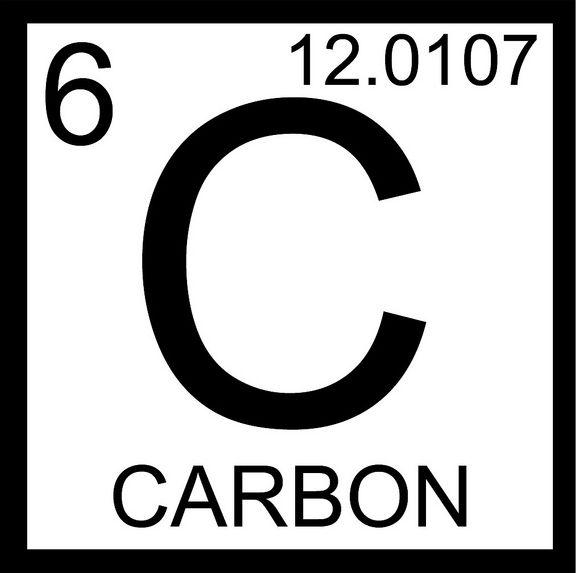During photosynthesis, green plants take CO2 from the abiotic environment and incorporate carbon into the carbohydrates they synthesize. Part of these carbohydrates is metabolized by the same producers in their breathing, returning carbon to the surrounding environment in the form of CO2. Another part of these carbohydrates is transferred to animals and other heterotrophs, which also release CO2 when breathing. The complete carbon cycle requires that decomposers metabolize the organic compounds of dead organisms and add new amounts of CO2 to the environment. CO2 is also added to the atmosphere as a result of volcanic activity, the erosion of carbonate rocks and, above all, the burning of fossil fuels by man.
All of this is important to understand because CO2 is a major greenhouse gas which causes heat to be retained between the earth and the atmosphere.
The excessive industrial activity that has been registered in the world since the Industrial Revolution is the main cause of global warming. The vast majority of processes developed since the Industrial Revolution release a huge amount of greenhouse gases that, once in the atmosphere, deteriorate the ozone layer and, at the same time, expose the Earth directly to the sun's rays.
Carbon dioxide or CO2 is the best-known gas of all because it is primarily responsible for preventing heat from escaping into the lower layers of the atmosphere; its production has increased by about 6 billion metric tons a year since 1990.
According to Alice Bows in the Ted Talk linked at the bottom of this post, in order to avoid a 4-degree climate increases, we need to cut down our carbon budget significantly. If we fail to do so, we will find that our infrastructure has not been designed to cope with an increase of 4 degrees. Further, we will be forced into a devastating food crisis as yields of maize and wheat in many parts of the world would be 40% lower than they are today and rice would have a 30% lower yield.
There are many ways that you can do your part in cutting down our carbon output! Here are some ways you can reduce your carbon footprint:
Calculator.aspx and discovered that I am responsible for the output of 4.67 metric tons of CO2e per year. I plan to cut down my carbon footprint by making sure I don’t have lights on in my house when they are not needed and cutting back on my use of a dryer.
If you would like to watch the Ted Talk referenced earlier, follow this link:
https://www.ted.com/talks/alice_bows_larkin_we_re_too_late_to_prevent_climate_change_here_s_how_we_adapt/discussion
If you’re interested in learning more about the carbon cycle, check out this video:
https://www.youtube.com/watch?v=nzImo8kSXiU
All of this is important to understand because CO2 is a major greenhouse gas which causes heat to be retained between the earth and the atmosphere.
The excessive industrial activity that has been registered in the world since the Industrial Revolution is the main cause of global warming. The vast majority of processes developed since the Industrial Revolution release a huge amount of greenhouse gases that, once in the atmosphere, deteriorate the ozone layer and, at the same time, expose the Earth directly to the sun's rays.
Carbon dioxide or CO2 is the best-known gas of all because it is primarily responsible for preventing heat from escaping into the lower layers of the atmosphere; its production has increased by about 6 billion metric tons a year since 1990.
According to Alice Bows in the Ted Talk linked at the bottom of this post, in order to avoid a 4-degree climate increases, we need to cut down our carbon budget significantly. If we fail to do so, we will find that our infrastructure has not been designed to cope with an increase of 4 degrees. Further, we will be forced into a devastating food crisis as yields of maize and wheat in many parts of the world would be 40% lower than they are today and rice would have a 30% lower yield.
There are many ways that you can do your part in cutting down our carbon output! Here are some ways you can reduce your carbon footprint:
- Give up (or eat less) meat
- Unplug your devices
- Don’t leave lights on when you don’t need them
- Also, try and use natural lighting when you can!
- Ride your bike, walk, or use public transportation whenever possible
- Give up fast-fashion retailers such as Forever 21, Zara, and H&M
- Shop at second-hand clothing stores such as Goodwill
- Eat locally
- Air dry your clothes rather than using a dryer
- Use cold water in your washing machine
- Buy less stuff
- Bring reusable bags when shopping
- Switch from incandescent light bulbs to LED
Calculator.aspx and discovered that I am responsible for the output of 4.67 metric tons of CO2e per year. I plan to cut down my carbon footprint by making sure I don’t have lights on in my house when they are not needed and cutting back on my use of a dryer.
If you would like to watch the Ted Talk referenced earlier, follow this link:
https://www.ted.com/talks/alice_bows_larkin_we_re_too_late_to_prevent_climate_change_here_s_how_we_adapt/discussion
If you’re interested in learning more about the carbon cycle, check out this video:
https://www.youtube.com/watch?v=nzImo8kSXiU

No comments:
Post a Comment